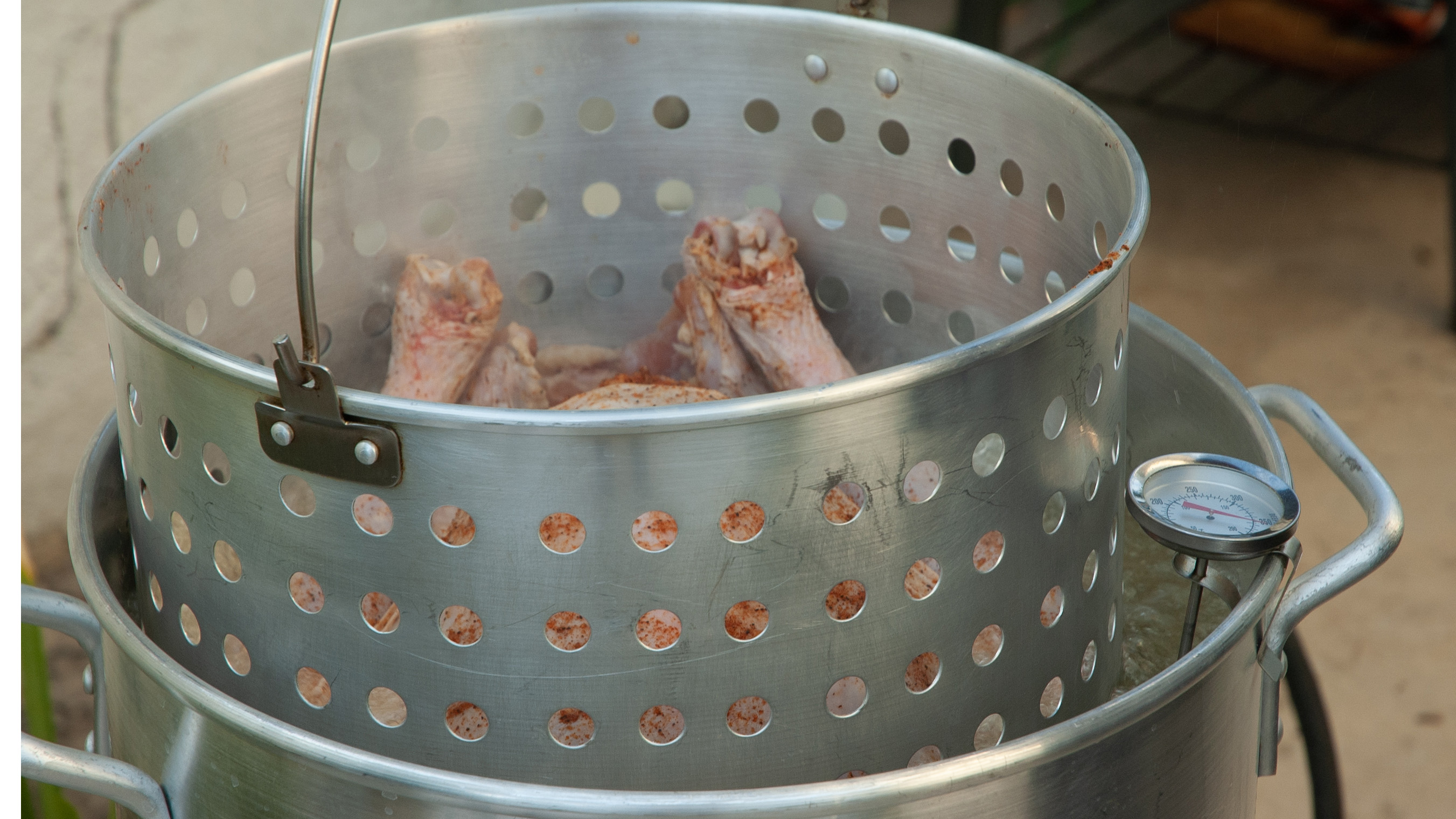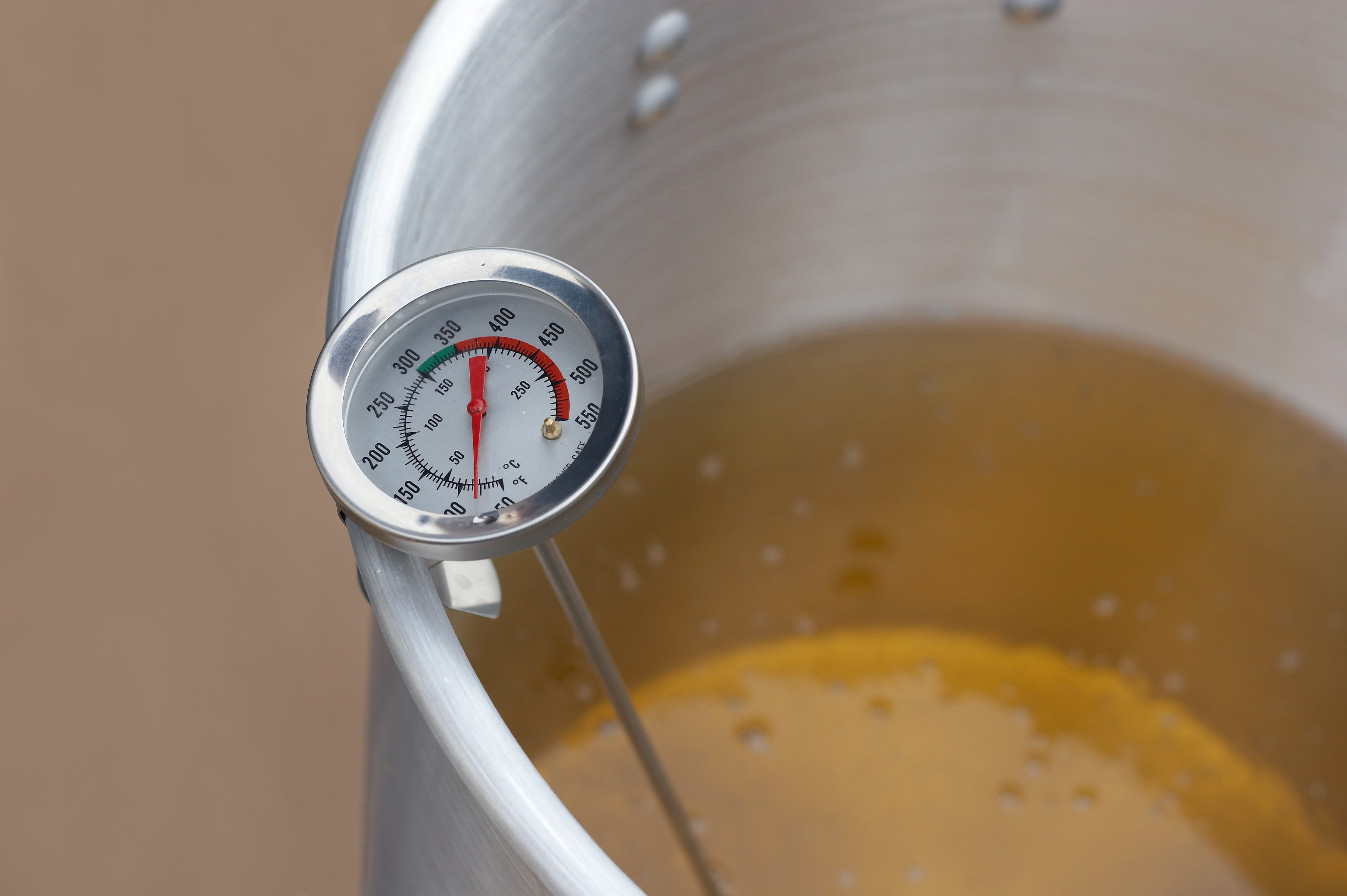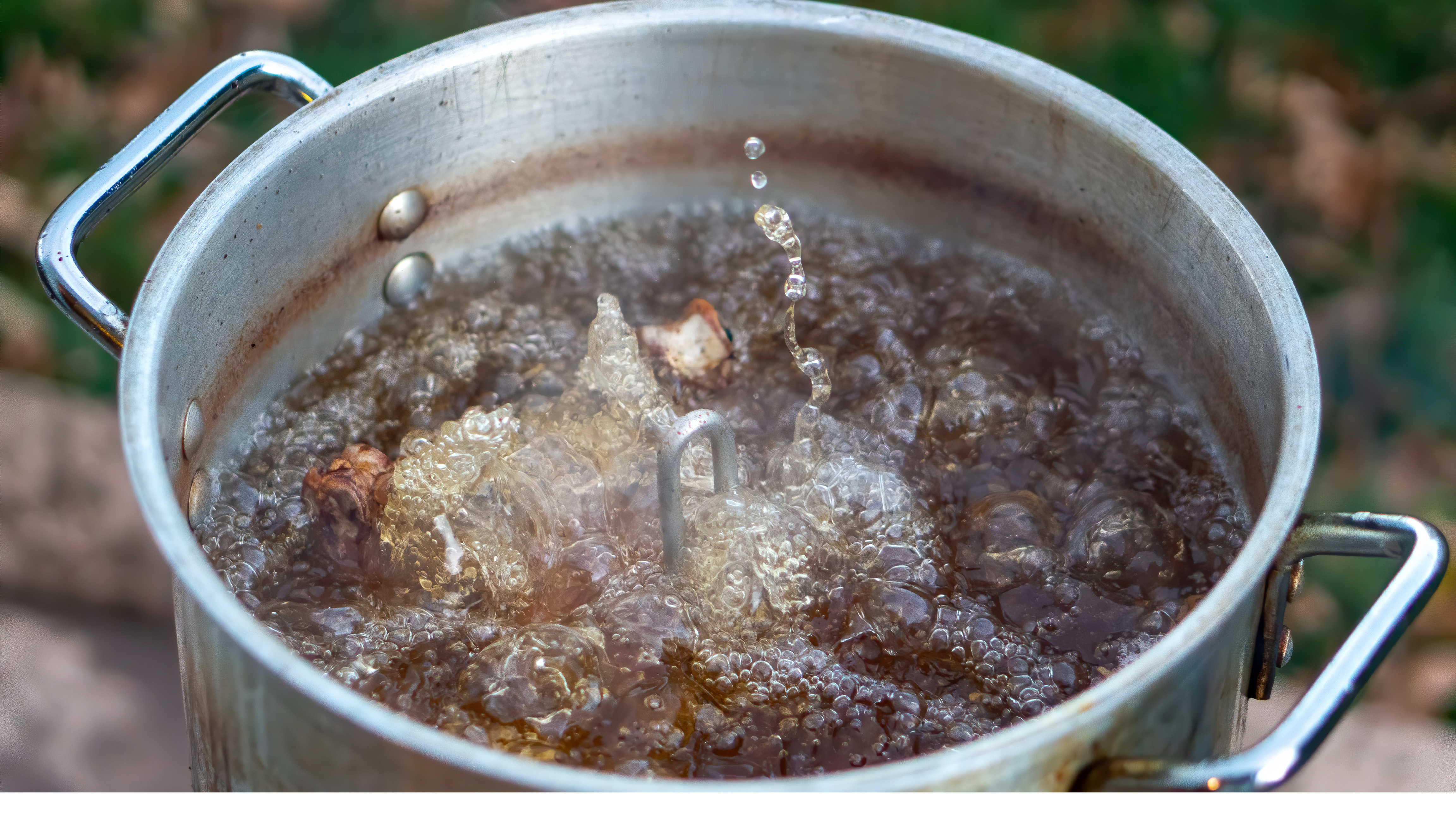
When it came to Thanksgiving dinners at my house growing up, the turkey was my least favorite part. I'd load up my plate with sides and take just a tiny sliver of turkey so I could say I gave it an honest try before going back for seconds on the good stuff. For most of my life, I thought Thanksgiving turkey was so unbearably dry and flavorless that it was a wonder it became a holiday staple to begin with.
Then I met my husband, whose family deep fries their turkey every year. And I finally understood what all the fuss was about. I'm talking crispy golden-brown skin, juicy meat, the kind of scrumptious turkey dinners you see families salivating over in the movies.
I've never looked back. Now we (or, rather, my more culinarily inclined husband), deep-fry a turkey every year around the holiday season. But before you fire up one of the best turkey fryers, there are a few things you should know.
Anyone who's watched a YouTube video where a deep-fried turkey goes up in flames understands that the technique is no joke. Outdoor turkey fryers deal with large quantities of oil that can not only cause potential fires but can also cause injury or harm without the necessary precautions. So before you set up your turkey fryer this holiday season, these are the top safety tips my husband and I have picked up over the years to make deep-frying our annual Thanksgiving turkey go smoothly.
Before you dunk
Thaw and prep your bird — When it comes to deep-frying a turkey, success is about 90% preparation. Always ensure that your turkey is completely thawed before cooking. The rule of thumb is to allow 24 hours of fridge time for every 5 pounds of turkey. If your turkey is still frozen when you lower it into the fryer, that extra water can cause the oil to furiously bubble and spill over, which can result in a fire.
Dethawing is only one part of the prep process. Remove any giblets, neck, or other trimmings often packaged with this festive birdie. And be sure to give your turkey one last pat down with a paper towel before lowering it into the fryer.
Put in the simplest terms: A wet/frozen turkey + hot oil = explosion.
Don't forget the seasoning — Use injectable butter in the meatiest part of the bird (the breast, thighs, etc.) in order to maximize flavor. Then rub the skin with your preferred herbs and spices.
How long you should inject your turkey before cooking is a subject of debate. Some swear that injecting the turkey the night before you plan to fry it brings out the flavor even more, but we've experimented with different marinading times and haven't noticed much of a difference in taste. We usually inject our turkey an hour or two in advance. (I'm partial to the Creole-style injectable marinade with Cajun seasoning for some extra kick, but to each their own.)
Don't overfill the fryer — When I asked my husband for his number one tip for folks who are new to deep-frying turkeys, the first thing he said was: "Do not, for the love of sweet baby Jesus, overfill the fryer."
Use just enough oil that it barely covers the turkey after it's lowered into the fryer. If you are close to the top of the pot, I've got bad news: You've got too big a bird on your hands, and you're gonna need a bigger pot to deep fry it safely. Oil spillage could spell fiery disaster at worst and, at best, earn you humiliation from your family for years to come.

Where to dunk
Stay outdoors and away from the home — Remember how I said success is 90% preparation? Well, that applies to where you deep-fry your bird too. When setting up your turkey fryer, follow these three cardinal rules to avoid adding a surprise ER visit to the holiday schedule:
1) Always deep-fry a turkey outdoors at least 10 feet away from your home and any trees, wooden structures, roofs, or anything else that could go up in flames.
2) Always place your turkey fryer on a flat, solid, nonflammable surface. So something like concrete, and not a deck. Make sure to clear the immediate area of leaves, children, pets, and intoxicated relatives.
3) Once it’s in place, don't move your turkey fryer. I don't think I need to explain why jostling a vat of piping hot oil over a flame is a disaster waiting to happen.
@tomsguide ♬ NANANA COLA IAN ASHER EDIT Out Now On SoundCloud - Ian Asher
How to dunk
Ok, so you've done your prep work, you've got your fryer all set up, and now it's time for the scary part. Proper preparation is key here as well. (Notice a running theme yet?)
Wear protective clothing/equipment — Make sure to wear protective clothing such as heat-resistant gloves that cover your arms. If you're worried about the hot oil splattering, it wouldn't hurt to throw on some safety goggles for added protection. Whatever deep fryer you buy should come with some kind of metal poultry holder and lifter to hold and lower the turkey without endangering yourself.
Ensure the proper temperature — When heating the oil, heat it slightly (and I mean slightly) above your desired cooking temperature, as lowering the turkey in will drop the temperature significantly.
Turn off the gas and take things slow — When it's time to take the plunge, you'll start by turning off the burner before lowering the turkey slowly into the fryer. If there is an excessive amount of bubbling, stop and wait for it to subside before continuing. Also, be aware that the turkey's internal cavity may act like a fountain for splattering oil. If possible, angle the butt away from yourself. Once the turkey is fully submerged, turn the heat back on.

After you dunk
Never leave a turkey fryer unattended — Congrats, you've managed to get things cooking without any third-degree surprises, but your job isn't done yet. Once the turkey is fully lowered, be sure to watch the oil temperature for the entire duration of the cook (the rule of thumb is 3-4 minutes per pound).
Remove slowly — When pulling the turkey out once it's done cooking, do it slowly to avoid spillage. Insert a meat thermometer in the meaty part of the breast to ensure it's fully cooked (at least 160 degrees). If it's not done, lower it carefully back into the oil for an additional five minutes.
Always leave the oil to cool overnight before disposing — Once you’ve finished, carefully remove the pot from the burner and place it on the ground. Cover and let the oil cool down throughout the night before disposing.
And there you have it! A juicy deep-fried turkey just waiting for everyone to carve into. If things get messy after you've cooked your turkey, check out how to remove common Thanksgiving Day stains quickly and easily.
More from Tom's Guide
- Empty list







